Iceberg roses are one of the most popular roses, and for a reason! Not only are they hardy and easy to grow, but they are also gorgeous. So, you might wonder what to plant under their crisp, white blooms.
Maybe you want to add a touch of vibrant hues to spice things up. Or, perhaps your roses need a companion to help ward off bugs and pests. Look no further! We have thoroughly researched what to plant under Iceberg Roses.
Without further ado, we have 17 suggestions you should try!
- Marigold
- Lavender
- Thyme
- Parsley
- Yarrow
- Oregano
- Catmint
- Russian-sage
- Feverfew
- Rue
- Geranium
- Lily
- Foxglove
- Tulip
- Salvia
- Creeping Jenny
- Lambs Ear
You might have other questions like, what kind of soil do Iceberg Roses like? Or should I fertilize my roses? Continue reading for the answer to these questions and more!
![Collaged photo of different kinds of plants and flowers, What To Plant Under Iceberg Roses? [17 Suggestions You Should Try!]](https://gardentabs.com/wp-content/uploads/2022/08/What-To-Plant-Under-Iceberg-Roses-17-Suggestions-You-Should-Try-683x1024.jpg)
What To Plant Under Iceberg Roses?
Let's break down our top 17 picks that go well with Iceberg Roses. Here we go!
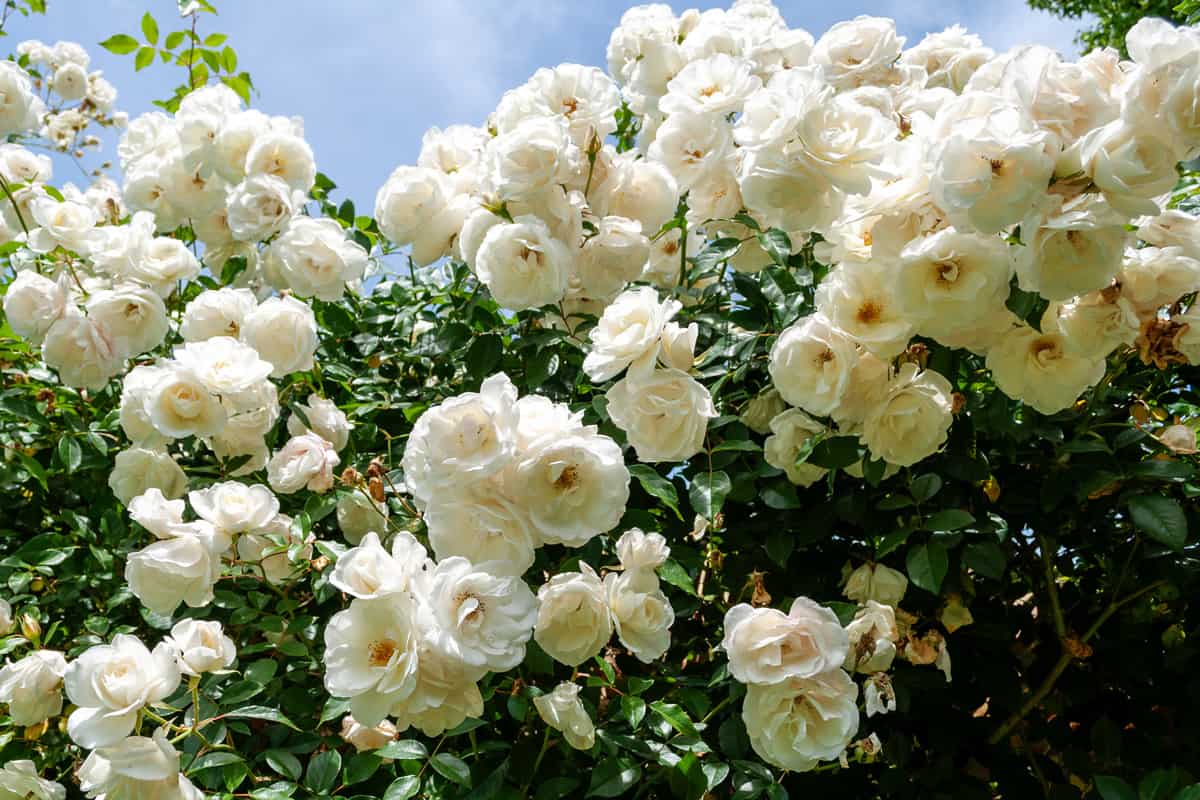
1. Marigold

Who doesn't love Marigolds? They are pleasing to the eye and easy to care for. They grow in almost any kind of soil. But, of course, a rich compost will do wonders for the orange, red, and yellow blossoms.
Another perk is that they are hardy from early spring to late fall, making them a well-loved choice.
These flowers are annuals, not perennials. However, we think it is worth replanting yearly because they are uncomplicated and produce a high reward. Marigold's bright colors will offset roses and give your garden a lovely contrast.
2. Lavender
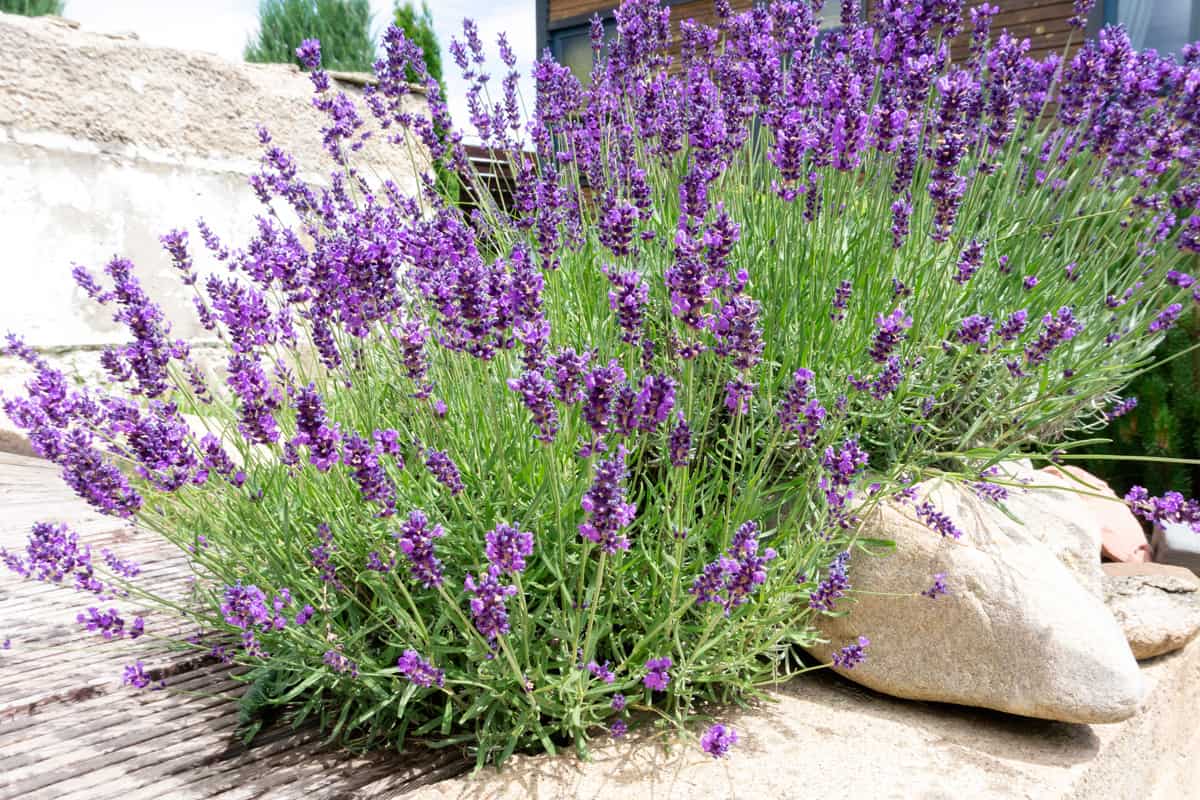
Lavender fields forever! Lavender is a perennial, just like Iceberg Roses, making them ideal for a trouble-free garden. Additionally, Lavender is a great companion for roses because they keep aphids away.
Lavender and Iceberg Roses thrive in the same conditions. First, they are both drought and heat-tolerant. This means you won't need to water these plants often, even in the summer heat.
3. Thyme
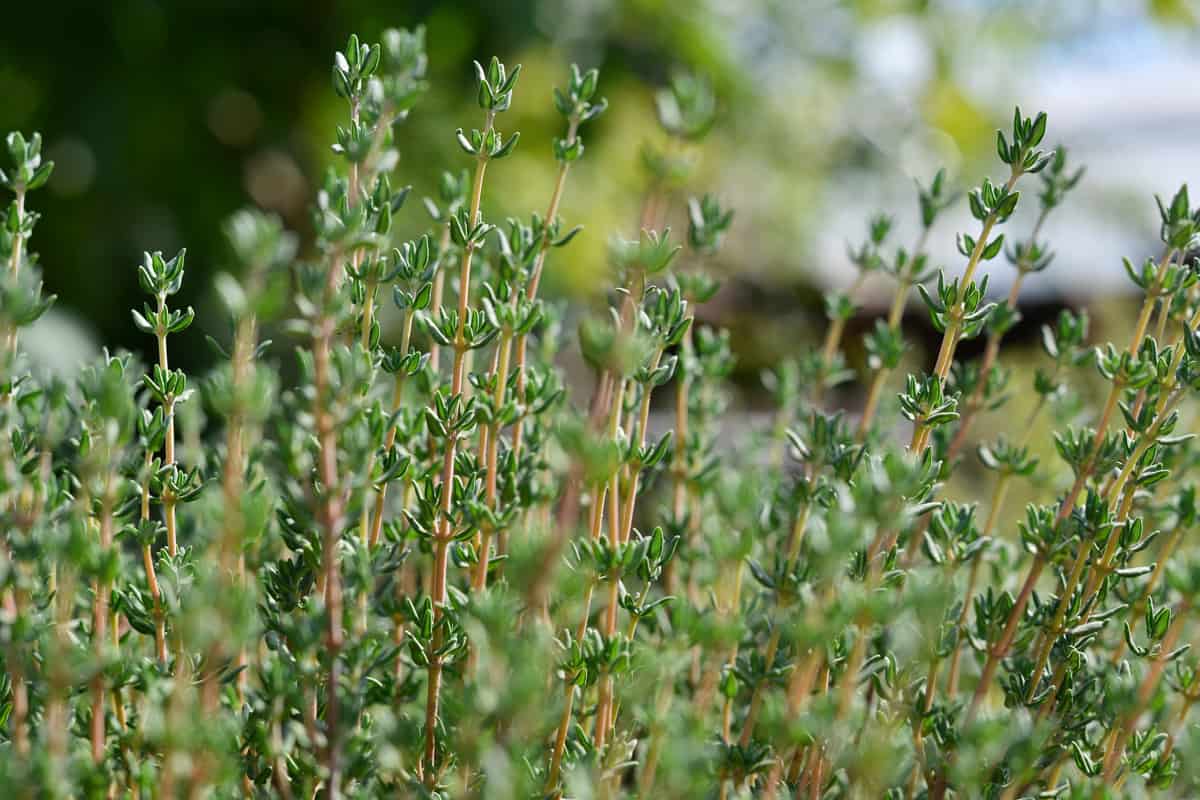
Thyme is an excellent culinary herb. Not only is it great for cooking, but it is also easy to grow with little effort. They come back year after year and continue to spread as a low-growing plant.
Both Iceberg Roses and thyme do well in full sunlight and well-drained soil. You can't deny these plants are two peas in a pod.
4. Parsley
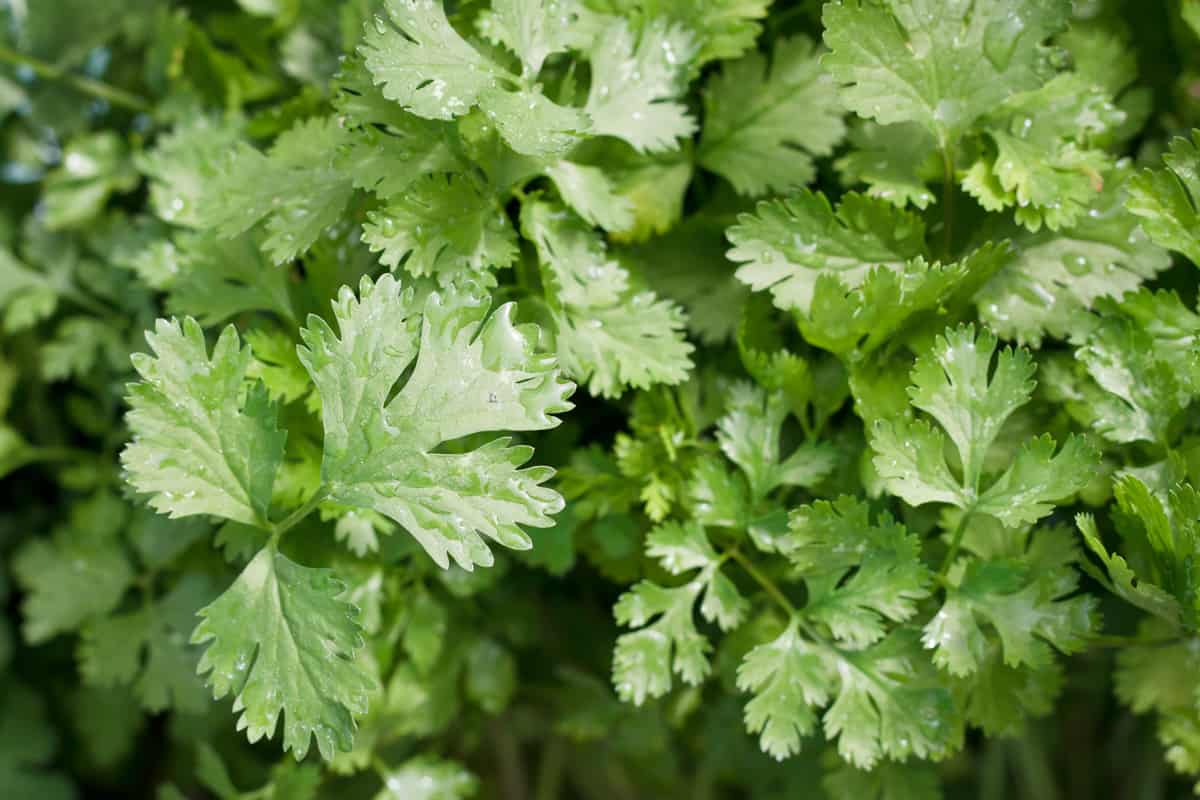
Parsley is best known as a garnish on dishes for its bright green color and flavor. This is an annual herb that pairs well with Iceberg Roses. Although you usually wouldn't think they would go well together, they have many of the exact requirements.
They grow well in full sun and fertile, well-drained but moist soil. When grown together, parsley protects the roses by repelling rose beetles.
5. Yarrow
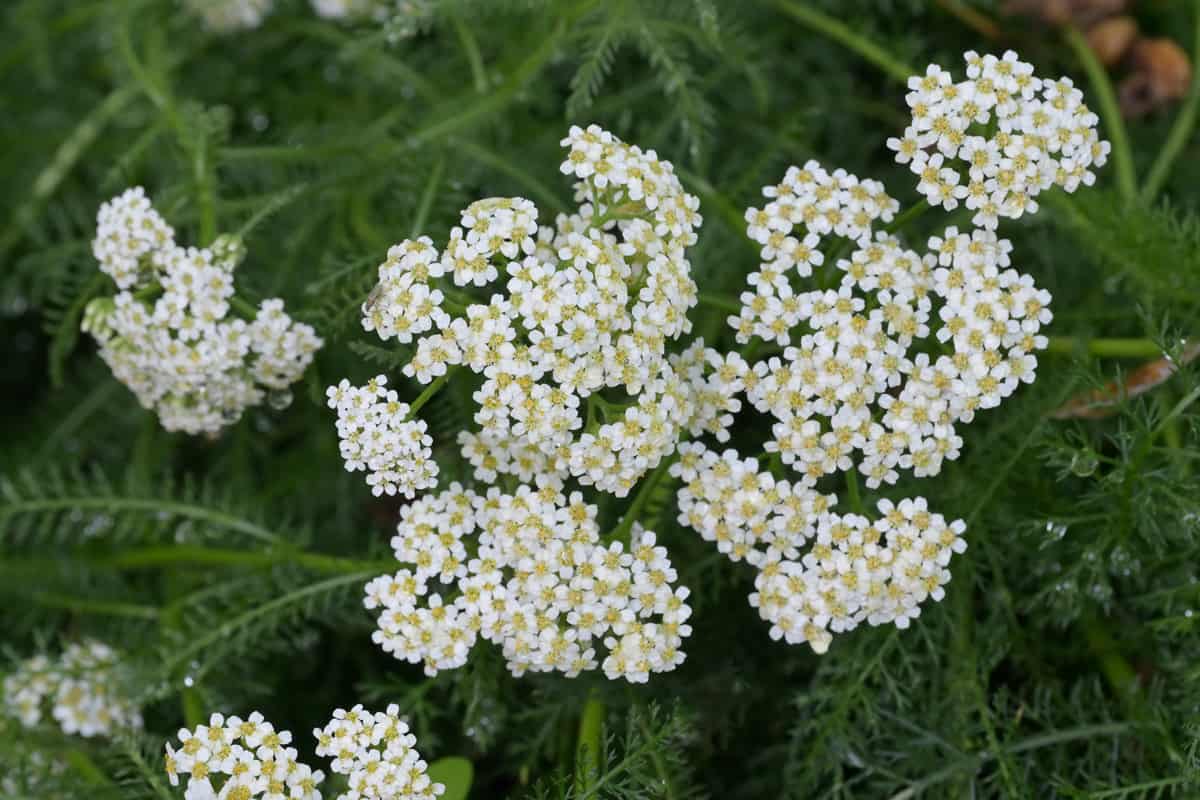
Yarrow has been described as clusters of tiny, feather-shaped blooms. This perennial can grow up to three feet tall and requires full sun. Remember that these plants are toxic to dogs, cats, and horses.
Yarrow's tiny, white blooms perfectly match Iceberg Roses's full and lush petals. You know what they say, opposites attract!
6. Oregano

Another wonderfully scented herb! Iceberg Roses and Oregano grow well together due to their full sun specifications and need for well-drained soil. Don't be afraid to grow this hardy herb.
You can cut back Oregano in the fall before the first frost. Or, cut off small stems once it's established to use in your favorite dishes.
7. Catmint
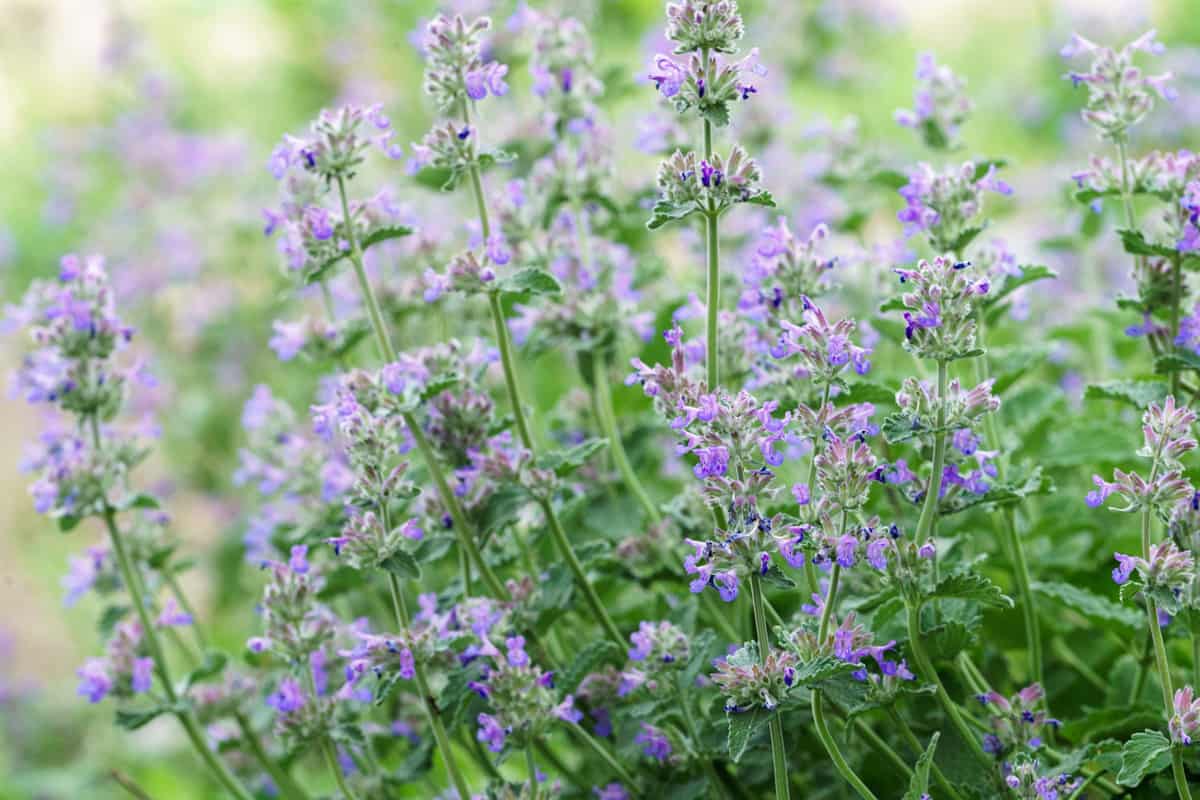
Catmint is a classic choice when paired with roses. These blue flowers are part of the mint family and are considered invasive. Catmint is anything but complicated.
It needs full sun and well-drained soil, just like roses. Other than that, not much is demanded from Catmint to remain healthy.
Catmint is rarely bothered by pests or diseases. This is excellent news for our Iceberg Roses. Furthermore, it is drought-tolerant and doesn't need much watering once it is established.
8. Russian sage
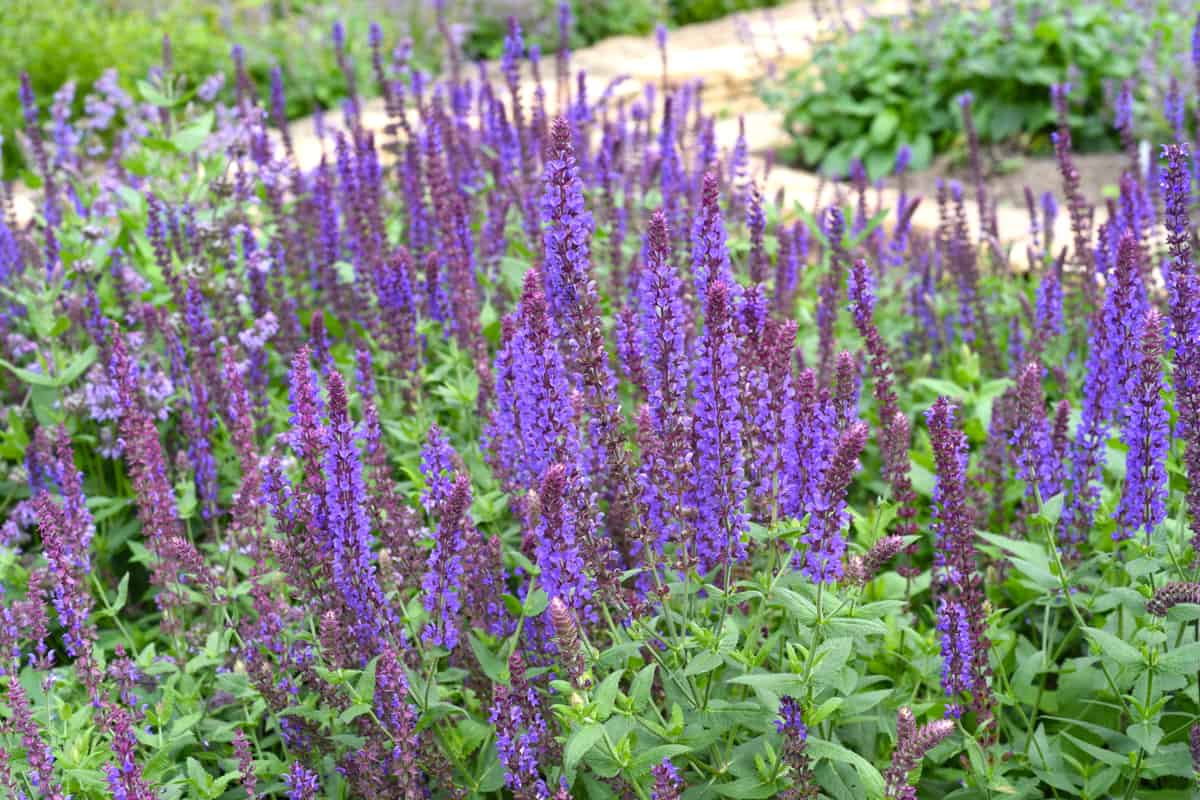
Russian sage reminds us of deep blue clouds. It is a woody, perennial shrub that prefers full sun. Just like roses, they are highly drought-tolerant.
They have a long blooming season, from spring to fall. Russian sage is the quintessential low-maintenance plant.
9. Feverfew
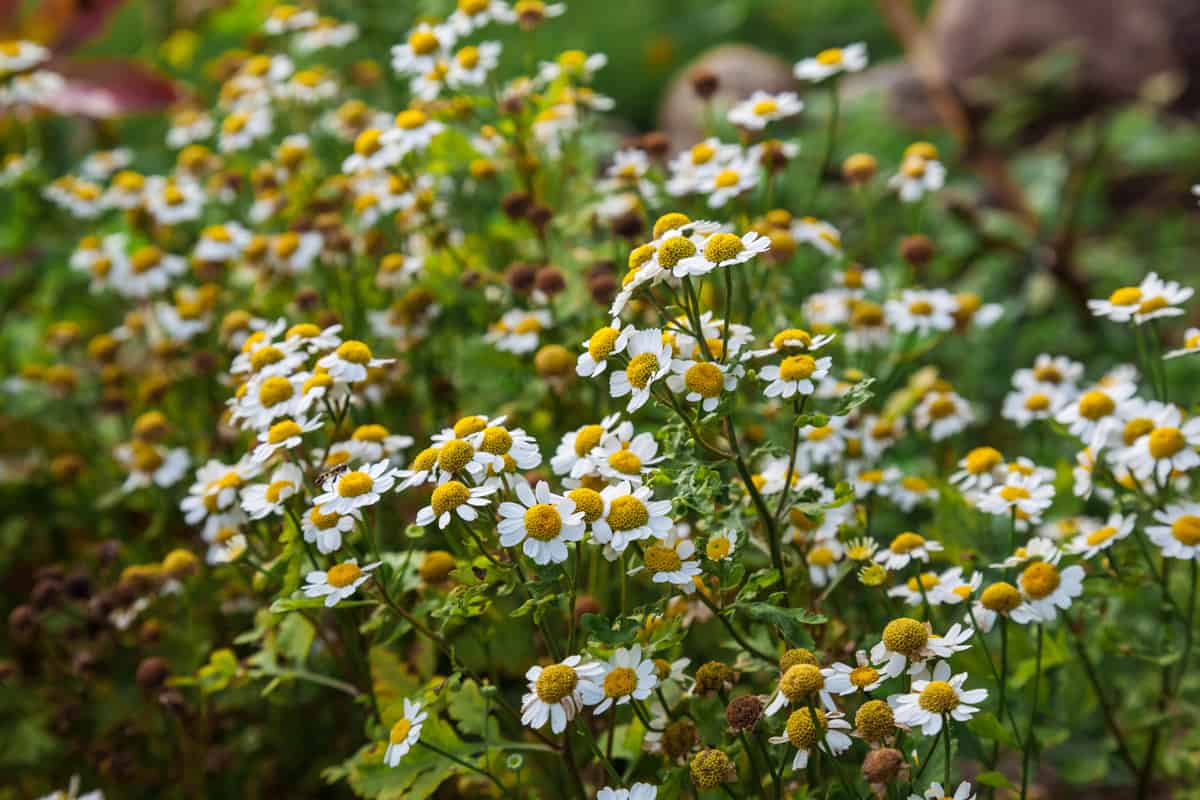
Feverfew used to be recognized to treat fevers and headaches. This dates back to the 18th century. That being said, there's not enough evidence to confirm this.
Feverfew looks related to the daisy family with soft, white petals and a round yellow center. This plant can be invasive, so gardeners beware.
10. Rue
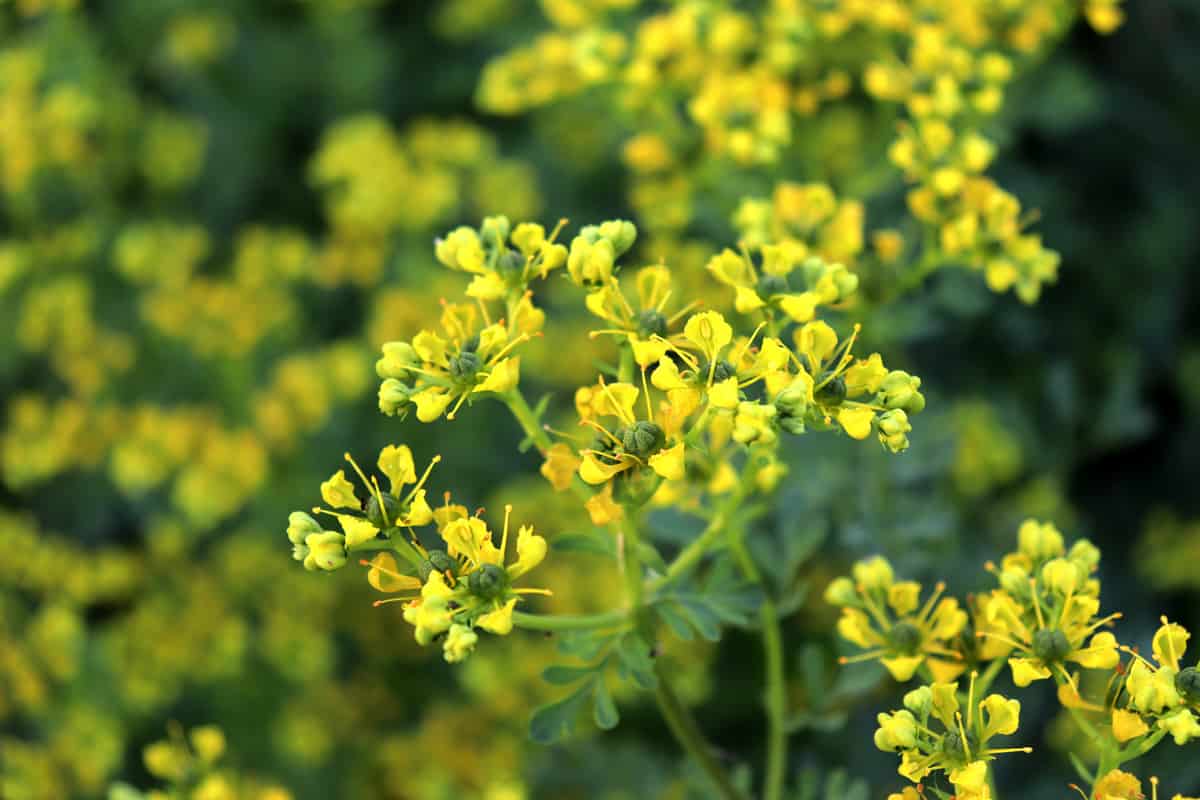
The rue herb is considered an old-fashioned herb. It is not as popular as other herbs, but that doesn't mean you should write it off! Rue can deter harmful bugs away from your roses, like aphids and Japanese beetles.
Full sun and well-drained soil are the best mixes for a happy plant. Rue and Iceberg Roses are better together.
11. Geranium
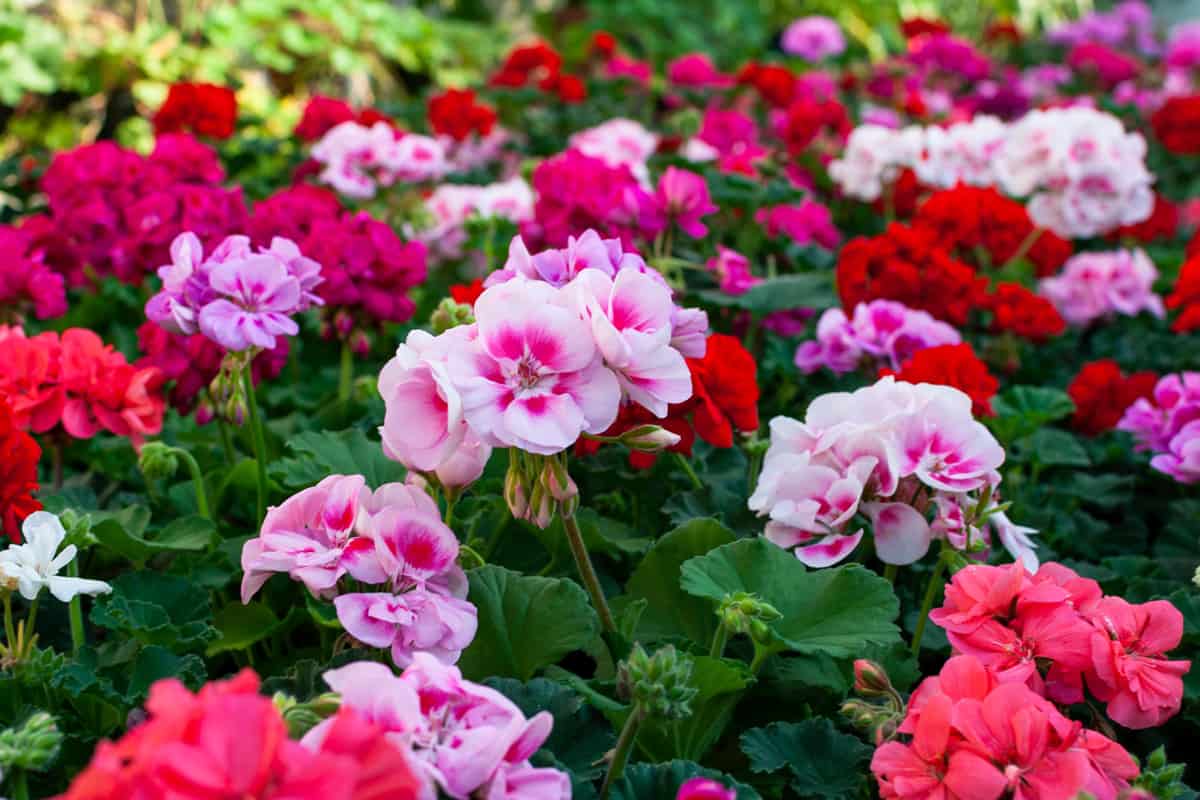
Geraniums are popular in many differensettings. They go well inside or outside, in containers or pots, and can be grown in the ground. These plants need to be protected from cold weather, making them an ideal friend to the protection of Iceberg Roses.
Make sure Geraniums get plenty of sunlight with well-drained soil.
12. Lily
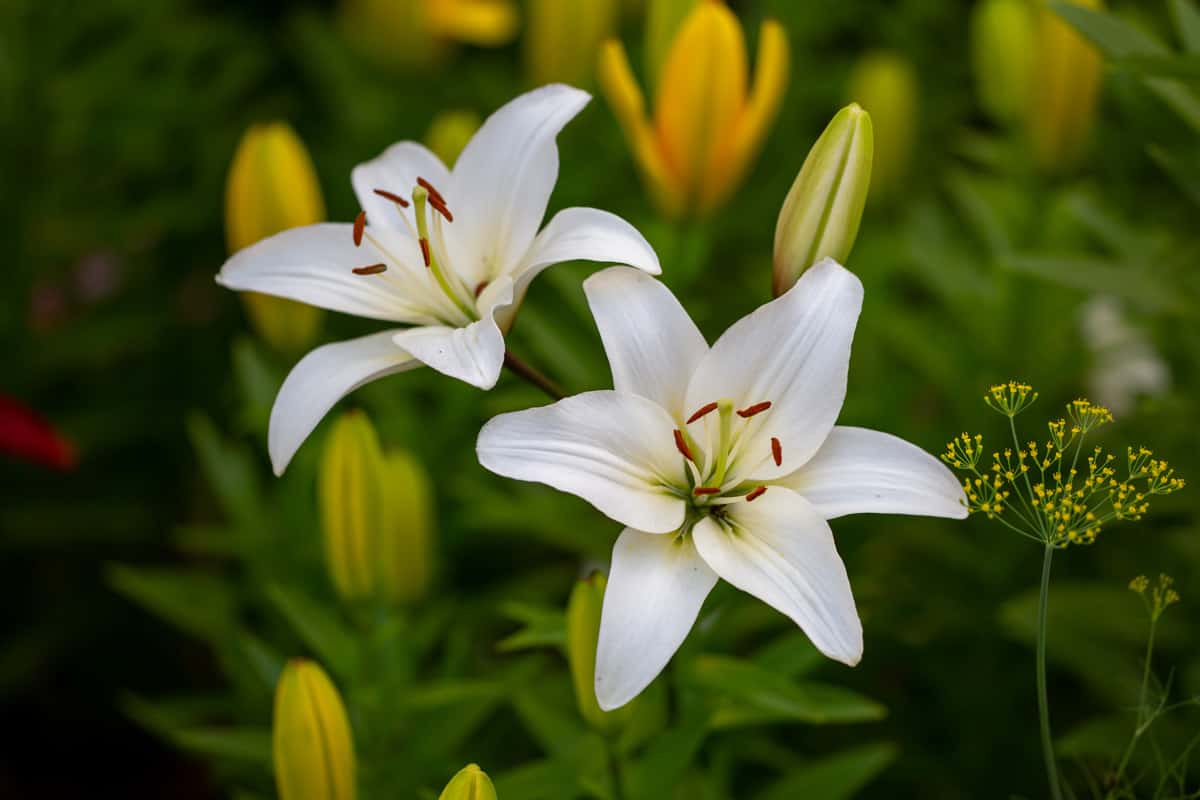
Lilies are a type of bulb that loves full sun and well-draining soil. When you reflect on lilies, think elegant and hardy. We contemplate the same thing when we think of roses.
Lilies and roses are a no-brainer combination for a graceful and sophisticated garden.
13. Foxglove
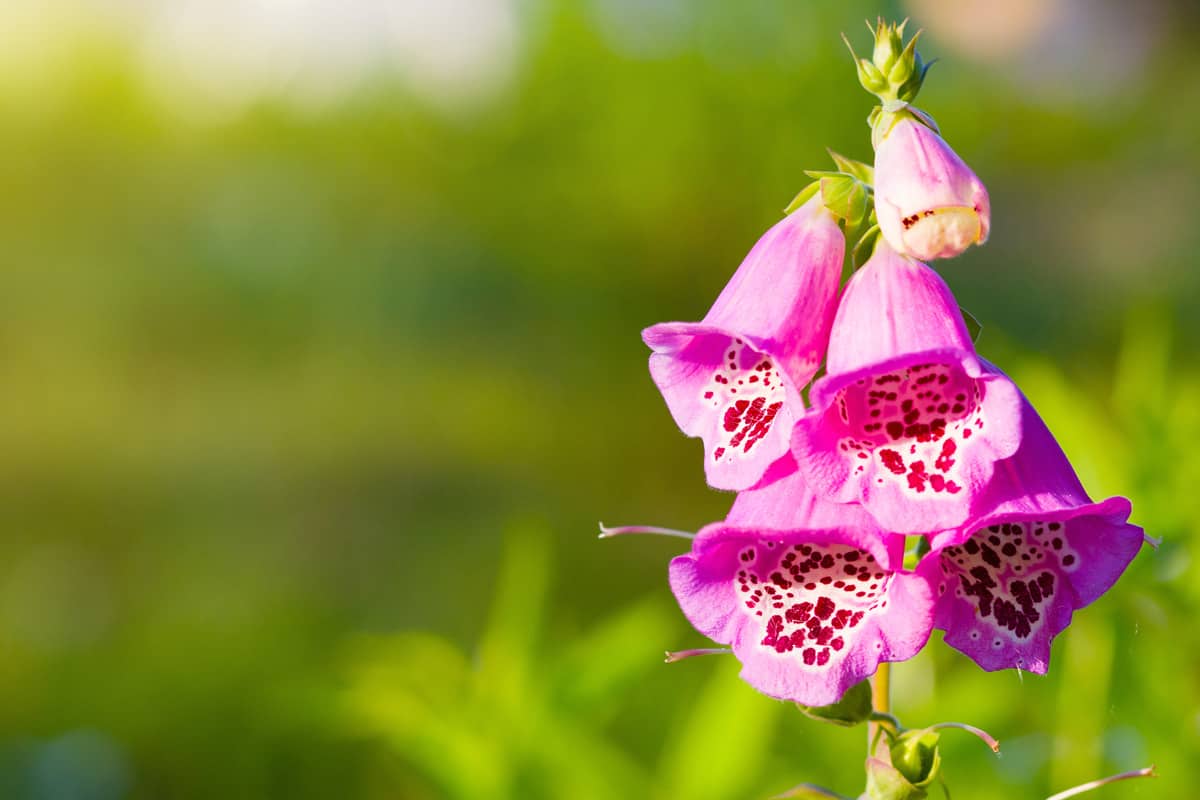
Foxgloves have a unique tubular blossom creating a dramatic effect. They will do well soaking up the full sun next to your roses. Well-draining soil is a must.
Foxgloves grow up to 5 feet tall, so plant them behind or next to the roses. This will prevent them from growing too tall over your roses.
14. Tulip
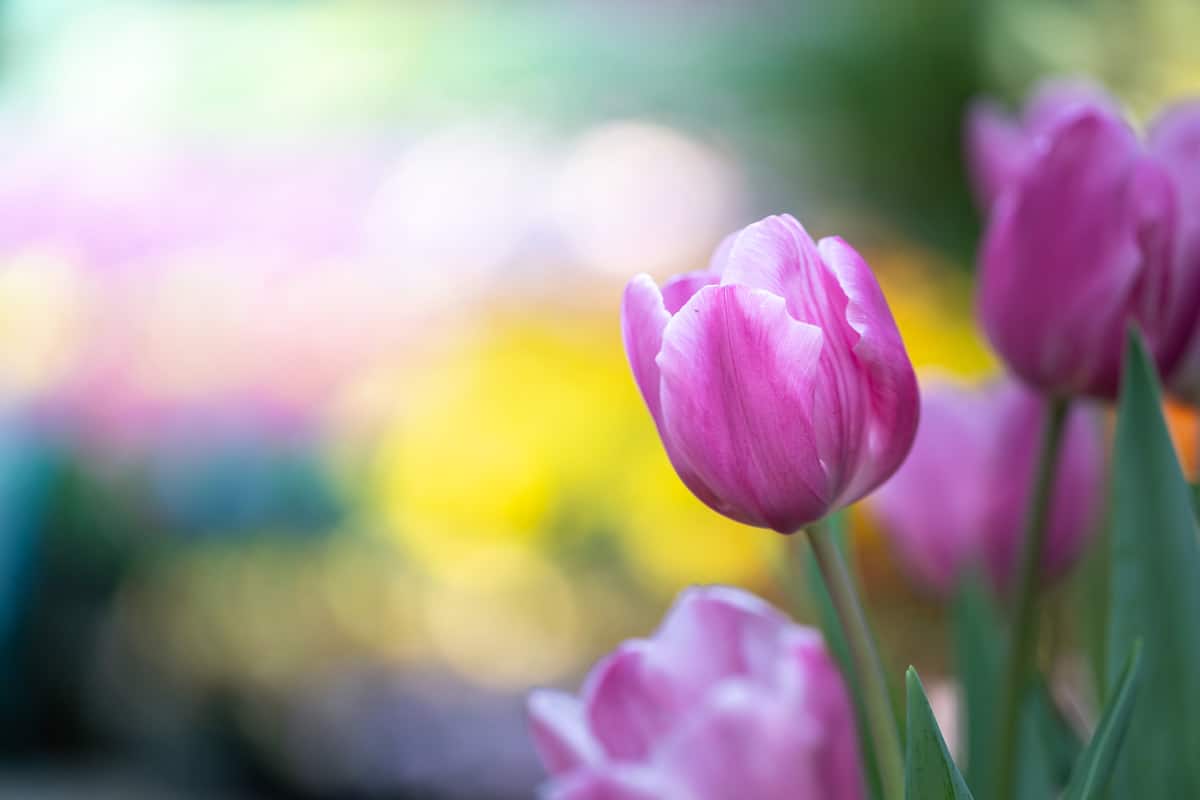
Tulips have cup-shaped petals that brighten our day! Tulips are hardy and cold-tolerant plants. Just as the rose petals are dying off in the winter, tulips burst forth in the spring.
Tulips have similar needs to roses. Their inclination is for lots of sunshine and well-draining soil. They dislike areas with too much moisture as they are prone to root rot.
15. Salvia
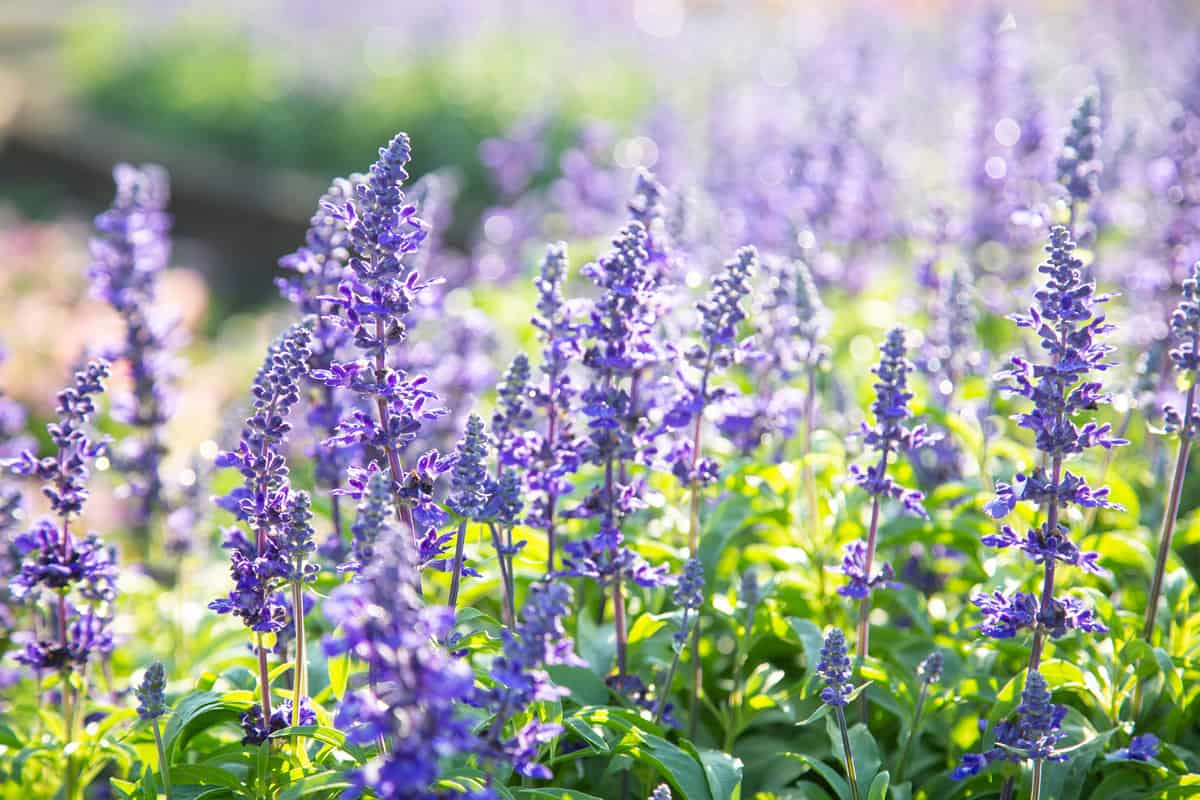
Salvia is an evergreen perennial. They make a wonderful bouquet with their long purple stems. Turn up the heat with Salvia because they enjoy the full sun. Frequent watering is not necessary with Salvia. Watering once a week is sufficient.
16. Creeping Jenny
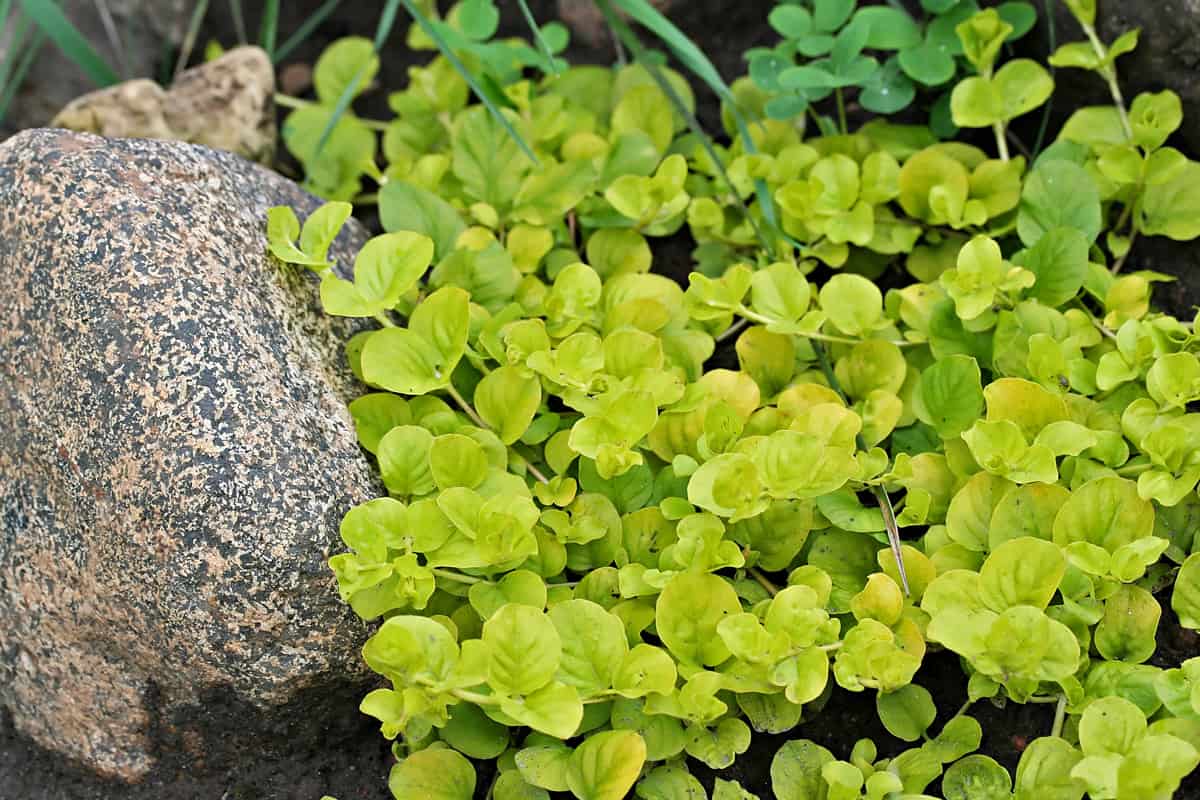
Creeping Jenny is a hardy ground cover that spreads quickly. This perennial is extremely easy to grow with the right conditions. It can grow in almost any soil and prefers full to moderate sun.
It is considered invasive, so regular pruning is recommended to avoid choking out other plants. We think this creeper looks charming amidst the white, delicate roses.
17. Lambs Ear
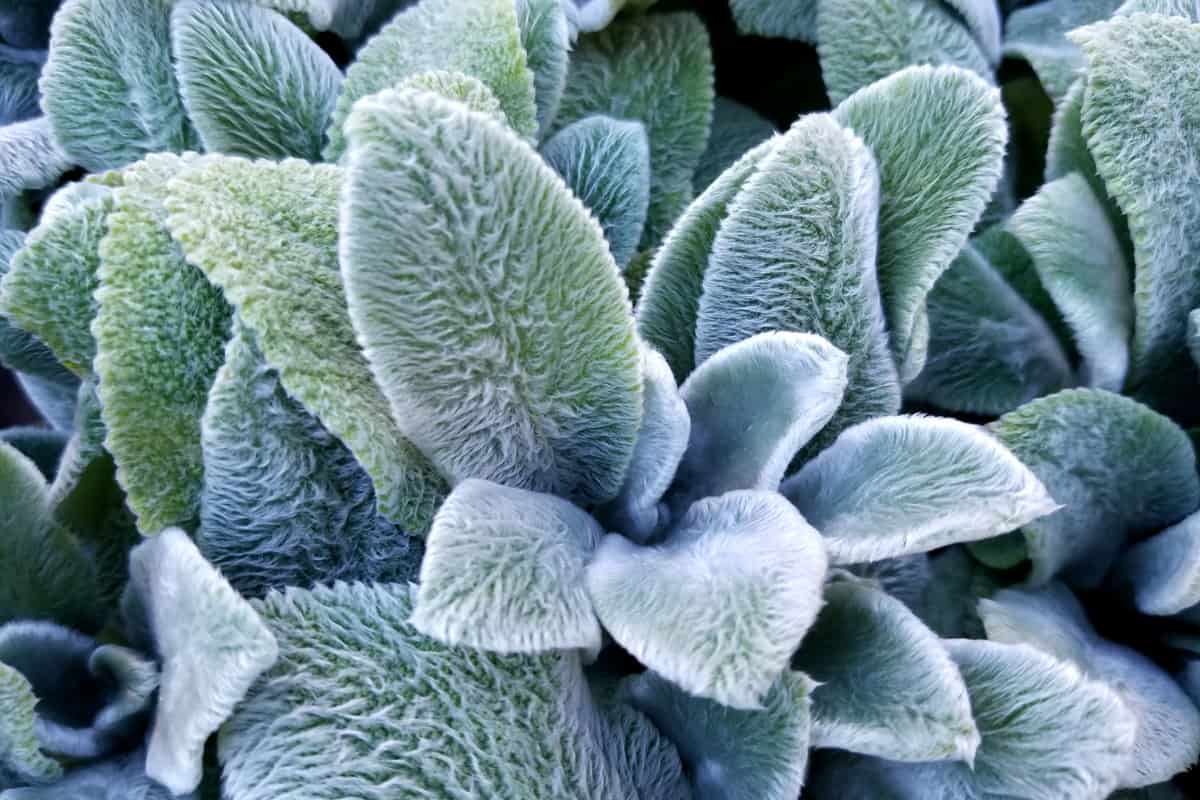
Lambs Ear gets its name from being soft and velvety. Its silvery-green foliage in the spring gives way to tall stocks of purple flowers in the summer. This pollinator is an excellent addition to your garden by attracting bees and butterflies.
Lambs Ear is drought-tolerant so hold off on the watering. It is susceptible to root rot and mold, so give them plenty of space and aerate.
Should I Fertilize My Iceberg Roses?
You can fertilize Iceberg Roses twice each growing season. Apply the first application in the spring and the second when you start to see blooms. A slow-release fertilizer is recommended.


Click here to see this fertilizer on Amazon.
How Big Do Iceberg Roses Grow?
Iceberg Roses grow up to 4 feet high and 3 feet wide. They are an excellent choice for borders or containers and look attractive when mass-planted. We think they look especially delightful along the line of a fence.
Do Iceberg Roses Only Come In White?
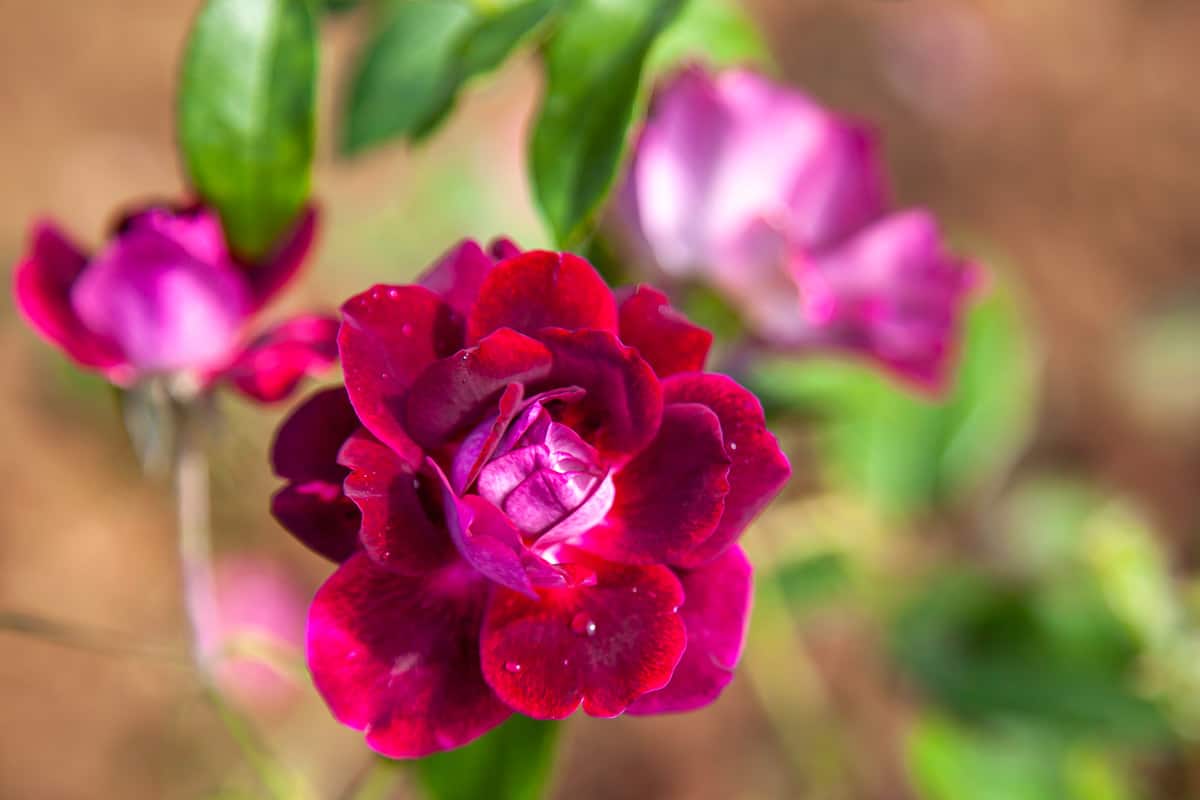
White is the most common color for Iceberg Roses. Nevertheless, they are available in several other colors. Pink, purple, and red Iceberg Roses are a sight to see!
Wrapping It Up

Every rose has its thorn. But in spite of that, we love the Iceberg Roses above all others. We hope you enjoyed the 17 different possibilities to plant with your Iceberg Roses.
Made it to the end? Check out these related articles:
What Is Stripping My Rose Leaves?
